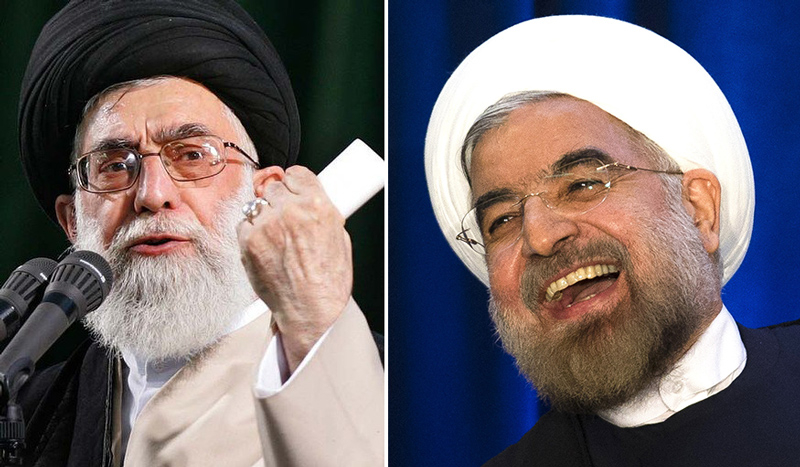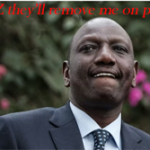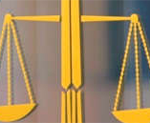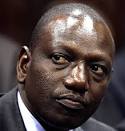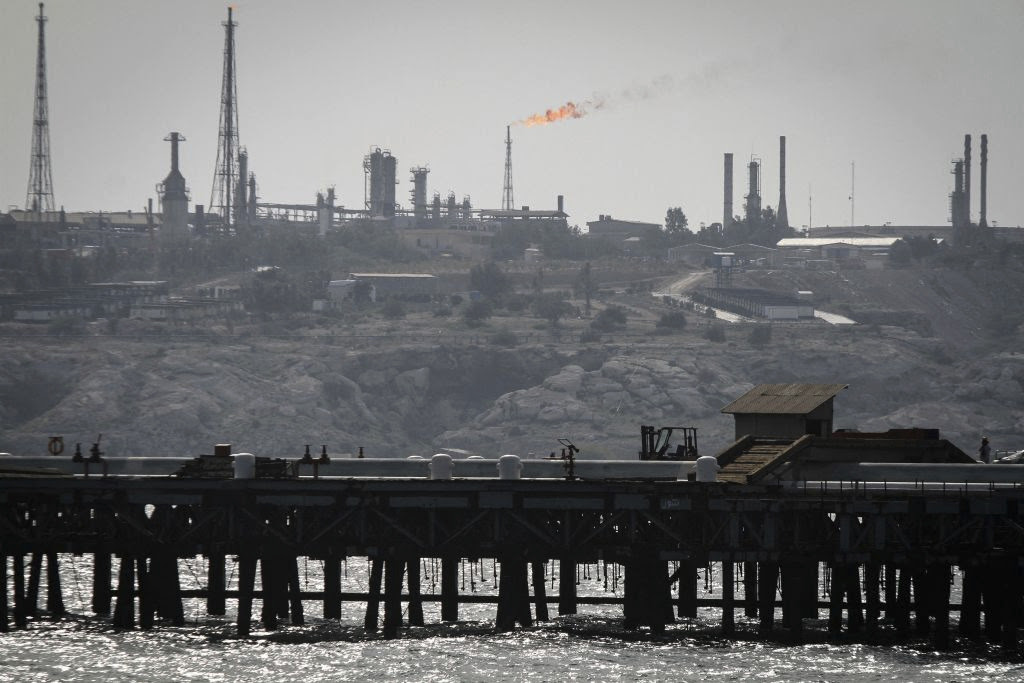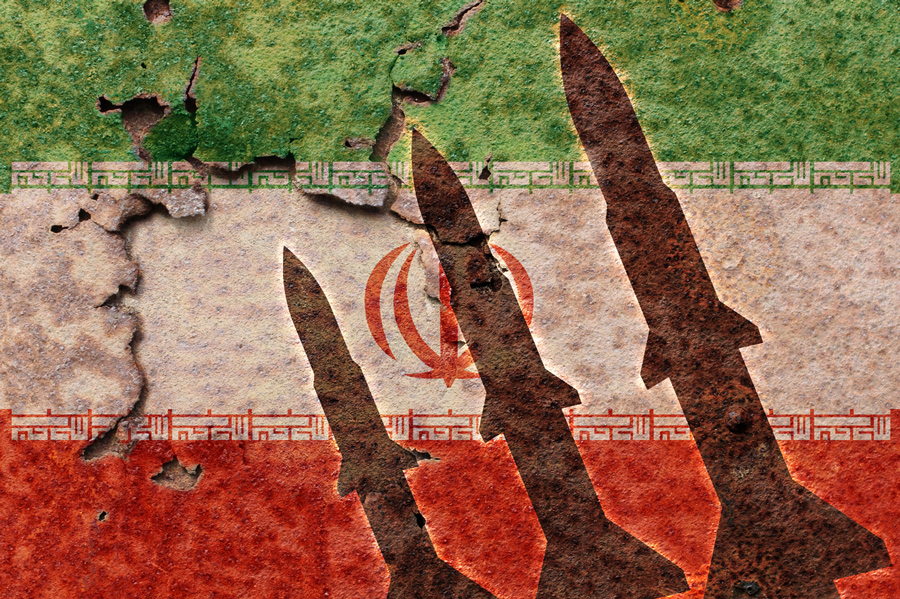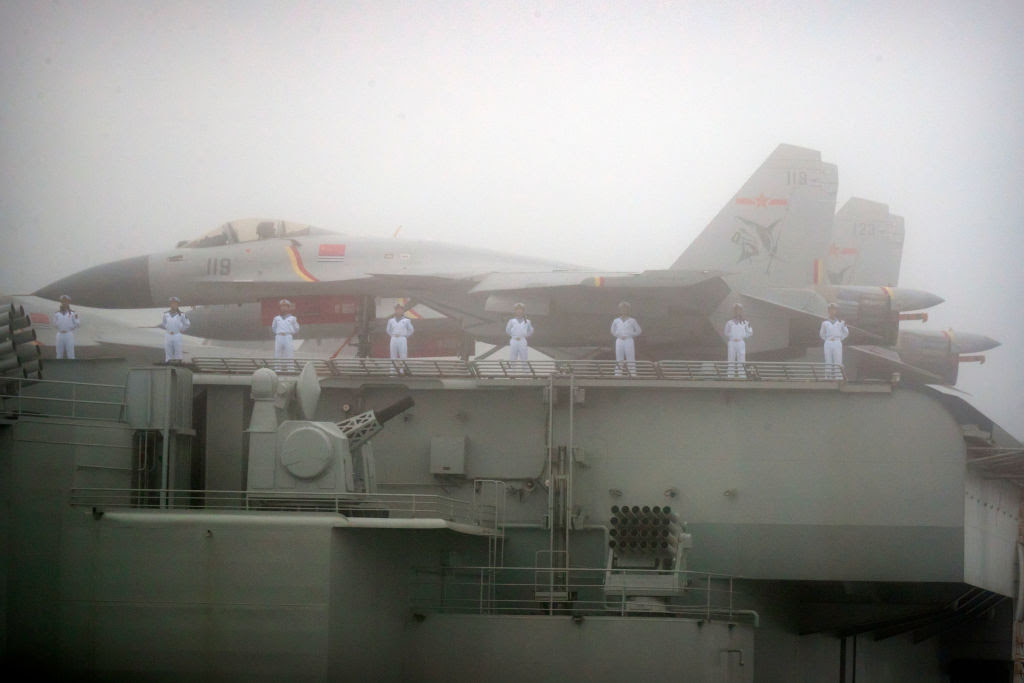Ever since Hassan Rouhani became president of the Islamic Republic of Iran, Americans have been told that a fundamental change had occurred, that the latest Iranian election had been a once-in-a-lifetime event, and that Iran’s formerly adversarial regime had been transformed into a moderate one.
In Iran, however, what has changed is precisely nothing. The Islamic Revolutionary Guard Corps (IRGC) is as powerful and dangerous as ever. Iranian support for terrorists has increased. And Iran’s genocidal rhetoric regarding Israel (“the malignant Zionist tumor“) and America (the great Satan) has not softened.
Since Rouhani replaced Ahmadinejad, all that has changed is U.S. policy towards Iran and the administration’s willingness to lie to the American people about it.
The assertion that Rouhani’s government somehow brought “moderates” to power in Tehran, and that these are people the West can – and should – deal with, was proven to be false when Ben Rhodes spoke to The New York Times. The State Department has even taken steps to erase from the historical record evidence of its duplicity in promoting the narrative of “moderation.” Not only were there no real changes in Tehran, but the “moderates” in the Iranian government never even existed. In the last election, any moderates who might have tried to compete were scrubbed by the regime as candidates.
Nevertheless, U.S. President Barack Obama himself personally guaranteed the peaceful nature of both Khamenei and Rouhani: he told us that “Iran’s Supreme Leader Ayatollah Khamenei has issued a fatwa against the development of nuclear weapons, and President Rouhani has said that Iran would never develop a nuclear weapon.” To date, no such fatwa has been seen by anyone. Rouhani seems to have been lying.
The Iranians also keep threatening to “walk away from the nuclear ‘deal,'” even though there is no deal to walk away from as Iran has not signed anything yet.
Like Bigfoot and the Loch Ness Monster, much has been written about the “moderates” in Iran’s government. The problem is that, like Bigfoot and the Loch Ness Monster, the Iranian moderate is also a myth. Granted, moderate Iranians do exist, but a genuine moderate within Iran’s government cannot exist: the Iranian system is designed to prevent it. When he set up his revolutionary government in 1979, Ayatollah Ruhollah Khomeini saw to it that no one could rise to power without its consent.
Khomeini was careful not to run afoul of the Koranic prohibitions against “making partners with Allah” (in Arabic, “shirk“), so he came up with a solution. He formed the velayat-e faqih (rule of the jurisprudents) which, according to Christoph Reuter, is “a dictatorship of clerics.” This arrangement allowed Khomeini to rule under the pretense that he was protecting Iran and all of Shia Islam until the return of the 12th Imam, who went into hiding in the 9th century. To ensure that the clerics could not challenge him, Khomeini created for himself the title of rahbar (supreme leader). According to terrorism expert Matthew Levitt, a 1986 U.S. Intelligence report on this system states that it “virtually equates Khomeini with the Mahdi — the 12th Imam.”
The velayat-e faqih is comprised of the most important mullahs, all hand-picked by Khomeini. Only those who are approved by the rahbar are allowed to hold office and run in the phony elections that try to pass for Iranian “democracy.” Every one of Iran’s seven presidents has been selected by the same system.
The first president, Abolhassan Banisadr, might well have been a moderate: when he urged the release of the Americans held hostage after the embassy was stormed, he was impeached by Iran’s Parliament (Majles). The second president, Mohammad Ali Raja’i, was less moderate than Banisadr, but after initiating negotiations to release the hostages, he was assassinated. The third president, Ali Khamenei, served from 1981 until 1989, when he succeeded Ayatollah Ruhollah Khomeini and became the second rahbar of the Islamic Republic. From that point on, Khamenei selected those who ran (often uncontested) for the office.
The only possible way for there to be genuine change in this system is for it to be initiated by a new rahbar. However, as Khamenei has shown no tendency to deviate from his predecessor’s vision, nothing has changed, and unless something prevents the 76 year-old Khamenei from selecting the next rahbar, nothing is likely to change.
Because Hassan Rouhani was hand-picked to run for president, there was never much of a chance that he could be a genuine moderate, and, if he were discovered to be one, zero chance that he could survive in the regime. Those who fail to live up to the rahbar’s expectations are impeached or killed.
So what has changed in Iran? Only the government’s image. Compared to the ravings of Mahmoud Ahmadinejad, the calm demeanor of Rouhani might well appear moderate — but that is an illusion. Compared to Ahmadinejad, Rouhani might look paternalistic, almost statesman-like in his elegant pressed robes. He always smiles; he never shouts. His rise to power shows only that the regime has learned the utility of outward appearances to an enemy obsessed with outward appearances.
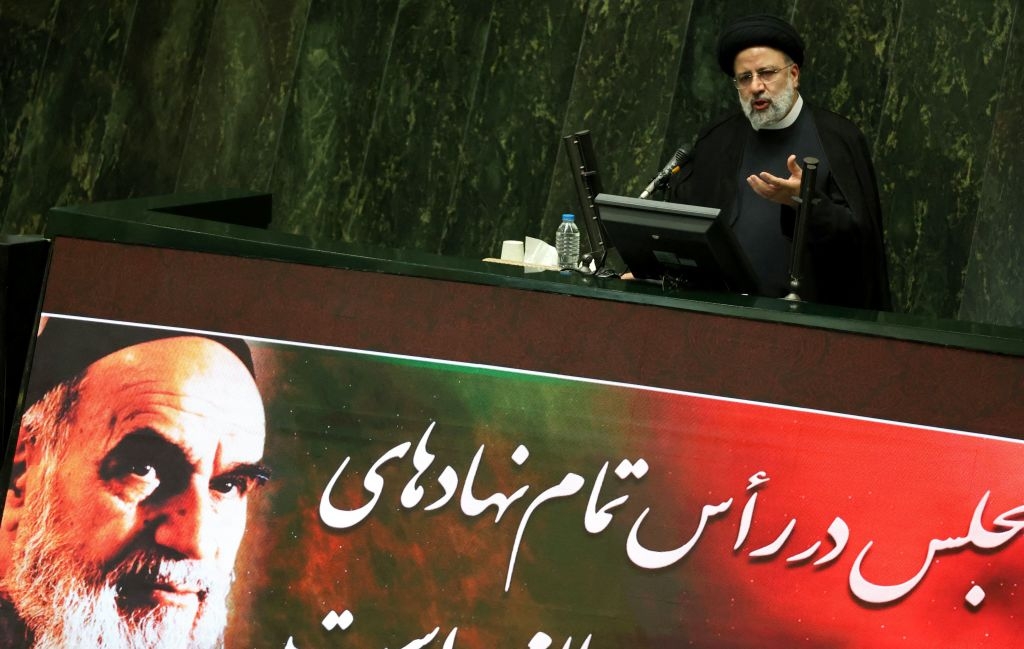
Spot the “moderate.” Hassan Rouhani (right) was hand-picked as Iran’s president by Supreme Leader Khamenei (left). The calm demeanor of Rouhani might well appear moderate — he always smiles; he never shouts. But that is an illusion. His rise to power shows only that the regime has learned the utility of outward appearances. |
The government of Hassan Rouhani is but a more presentable face of the same regime that has continued its medieval sham trials, escalated torture and increased its already record-breaking execution rates. It is the same regime that arrests squirrels and pigeons for spying, and only now has turned its counter-espionage attention to Kim Kardashian. It is the same regime that has threatened to wipe Israel off the map and launch missiles at the U.S. — only now the Obama administration has provided it the means to do so, if Iran has the patience to wait 10 years, maybe fewer. It is the same regime that came into power vowing to defeat the “Great Satan,” only now the “Great Satan” is saying that Iran does not really mean it.
Since Hassan Rouhani came to power, the only thing that has changed is the American government’s willingness to accept the Iranian government’s lies and pass them on to the American people.
A.J. Caschetta is a Shillman-Ginsburg fellow at the Middle East Forum and a senior lecturer at the Rochester Institute of Technology.







